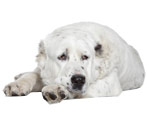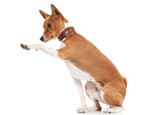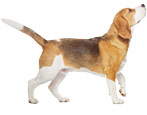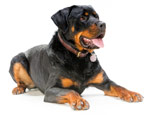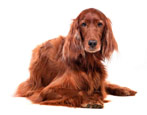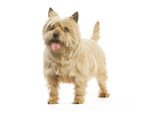Newborn puppies: developmental features, sex determination and care nuances

As there are no two absolutely identical people on the planet, so there are no dogs that in their development and life path would completely repeat each other. But at the same time, each dog, being born, goes through certain stages of development. And all breeders who have to deal with puppies need to understand what constitutes a dog's newborn period.
Development features
Puppies, like all mammals, are born viable but helpless animals. They do not see or hear anything, they are not able to survive on their own. From the moment of birth, babies are in the vegetative period, which lasts 10 days.
These days are aimed at adapting the puppy to environmental conditions, primarily to temperature and smells. On the first day, the puppies still resemble soft fluffy lumps, and on the second day they become denser, more elastic, their fur begins to shine beautifully.


At this time, newborn puppies are growing very actively: in the first week, they gain twice in weight. Babies are becoming more active every day: the owner, even during the growing season, can already determine which puppies in the litter are stronger. If the puppy is strong, he tries to be the first to break through to the mother's breast, weaker babies are forced to give in... Strong dogs gain weight faster, their eyes open earlier and hearing develops.
The breeder should tirelessly observe the babies and their mother: weak puppies should be placed under the milk nipples on time. The bitch usually monitors the cleanliness of the nest herself.


The opening of the eyes and ear canal in puppies occurs on the 10-14th day of life. This is a transitional period in the development of a dog or a phase of awakening.Kids can see the world around them, hear sounds. At the same time, milk teeth are erupting.
If the puppy belongs to a small or medium breed, he is already trying to stand up and walk. Large breed puppies try to stand 15-17 days... They still look like teddy bears, they do not make sounds at all like dogs, but they very quickly learn to growl and bark.


From two weeks to one month, puppies go through a period of transition to independence. Puppies at 3-4 weeks are much less dependent on their mother. When the owner sees their first milk teeth, he can begin to give complementary foods. Food must be liquid.
By 3 weeks, complementary foods will already be given 2-3 times a day. By the age of one month, babies are almost completely switched to regular food.
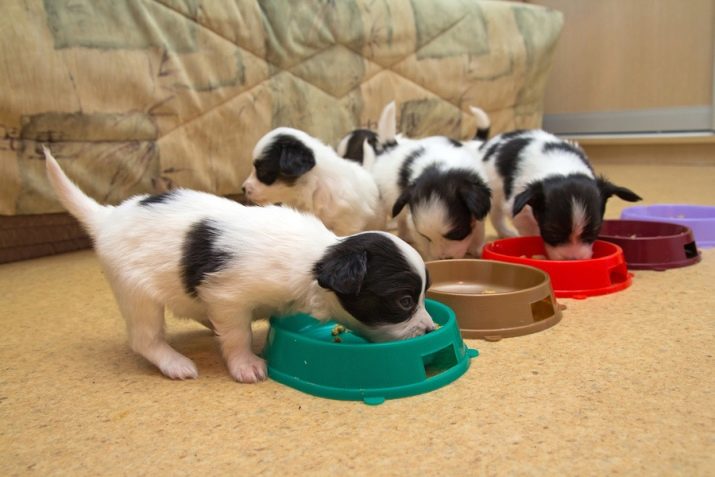
It is in the month that the puppies begin to really get used to the owner. At the same time, kids become very curious: they are interested in everything that is around, they boldly explore the territory, try everything to their teeth and, like all children, love to frolic and play.
Psychophysiological stages of puppy development | Basic moments |
Neonatal or neonatal period (1-10 days) | Rapid growth of the puppy, development of unconditioned reflex reactions, intensive growth of the brain. The main reaction of the baby is positive to the warm woolen surface. In the absence of the mother, the puppies sleep in a bunch, so they try to keep warm, because their heat regulation is still far from perfect (crowding reaction). |
Transition period (10-30 days) | Babies show interest in meat and other solid foods, they have chewing movements. Conditioned food reflexes are formed. Natural orientation reactions begin to work, as well as conditioned defensive reflexes. |
Initial socialization period (35-80 days) | Conditioned reflexes are formed at an impressive speed. The physical activity of the puppies grows rapidly, and the playing and research activity of the puppies grows stronger. |
Then the juvenile period begins (12 weeks +), in which the typological characteristics of the dog are formed.
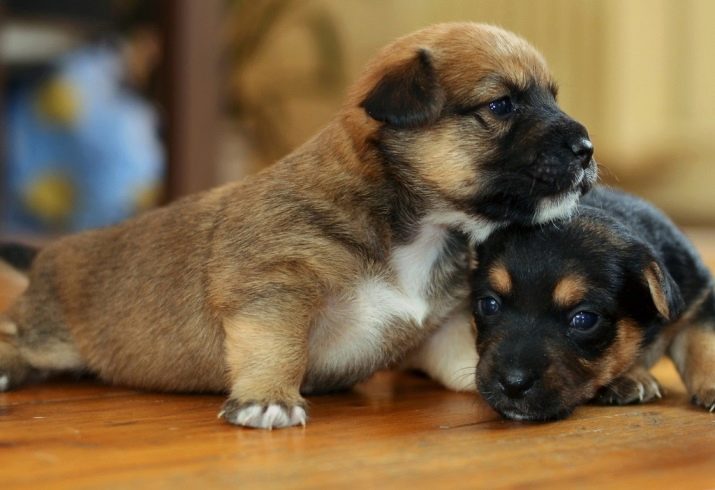
How to determine gender?
There is no other way to determine the sex of a dog other than by examining the genitals. Ways of determining "by the face" or "by character" are highly questionable.

Sexual characteristics of a male puppy.
- In males up to 8 weeks the genitals are not sufficiently formed expressively, the testicles are not yet visible, but the tiny penis can already be found.
- In the area slightly below the navel, where there is virtually no fur, the newborn will have a tiny crease with a small protrusion. If the dog is long-haired, then there will be a clearly visible tuft of hair in this place.
- Under the tail of the dog there will be an anus, between the paws - a small tuft of hair (here in the future there will be testicles).

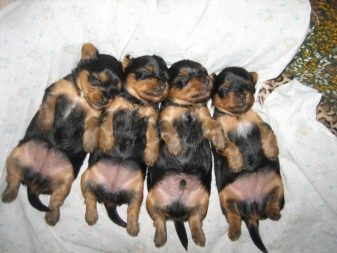
Sex characteristics of a puppy bitch:
- girls-dogs do not have a tuft of hair or a clearly palpable protrusion near the navel, but there are usually small marks of nipples (although they are also in males);
- under the tail, slightly below the anus, there will be a small seal (genital slit) practically between the legs.

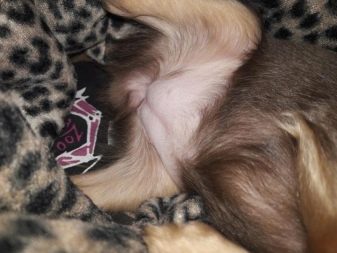
The examination must be carried out delicately, because babies are fragile and vulnerable. You should not touch the newborn right away - in the first days you may not make out its gender, but such examinations can weaken the smell of the puppy for the mother.
The most informative examination will be in the third week of life and beyond. You will also notice that male puppies will be slightly larger than their sisters.
To carry out a correct examination, the owner needs to take a towel (terry, heated on a radiator), put the puppy on its back, holding it well with his hand. Pet the baby, try to relax him.

What to feed the puppies?
It is not difficult to feed a dog his fill, but to feed correctly, according to the norms, is a matter that requires knowledge. Alas, dogs often endure poisoning with stale food, and not hungry street dogs, but pets. The food that your pet will eat must be fresh.
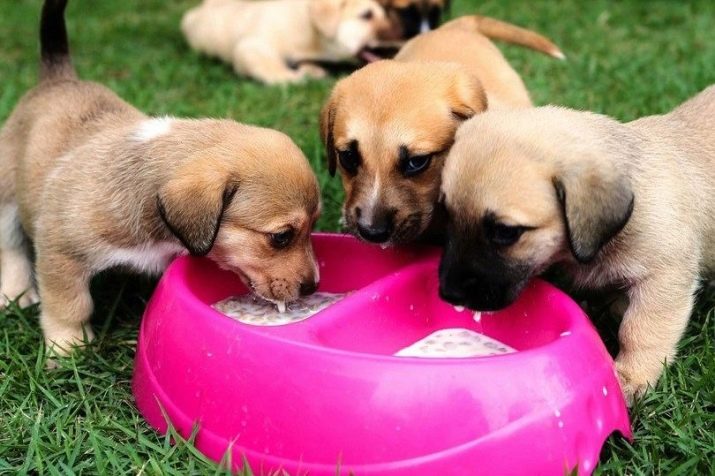
The following foods are used to feed the puppy.
- Milk. Up to 4 months, it is present in the baby's diet. Many experts advise giving the puppy a healthier goat, but since it can be problematic to get it, a whole cow will do. By six months, the amount of milk decreases, then it is completely removed from the diet, leaving only fermented milk products in it.
- Dairy products. The dog needs them for the intake of calcium into the body and for a comfortable digestion. Serum is useful for puppies. But the grown dog eats sour milk only twice a week. For success in training the baby, you can sometimes treat it to hard cheese.
- At least 40% of the food in the diet should be meat. It can be given raw, scalded, or boiled. The puppy can be fed with skinless chicken, turkey and veal, beef, horse meat.
It is necessary to include in the menu of dogs and organ meats. All of them are cut into small pieces, but you do not need to turn them into minced meat. Meat begins to feed 20-day-old puppies (around this age they have teeth).
- Fish or seafood is given to the baby twice a week.... But river fish is not the best option. The puppy eats it with appetite, but the consequences can be dire: river fish are often infected with helminths, and the baby can also choke on the bone.
- Vegetables... Vegetables are full of vitamins, therefore they are required in the diet. They are usually mixed with porridge or curd. You can stew vegetables, or you can wipe them on a grater. Puppies can be given pumpkin, zucchini, beets, carrots. It is better to start with grated carrots with sour cream.
- Cereals. Porridge is an addition to the main diet of puppies, which consists of meat and dairy products. In the first months after birth, babies' porridge is boiled in milk. Evaluate how the dog tolerates groats: some puppies do not have a relationship with buckwheat, for example.
Soups are cooked with cereals and vegetables for pets. Of course, you cannot feed a week-old puppy with such food, but you can feed a three-week-old baby (but not very often, 2-3 times a week).


And babies can also be given egg yolks (it's great if these are quail eggs). Some puppies like fruit, and if they tolerate it well, you can offer the dogs such a treat from time to time. But only in a safe form, for example, apple slices. But do not even offer the puppies fruits with seeds, as well as grapes and currants.


Sometimes the question arises about how to feed the puppies if the dog does not have milk or if they are very small without a mother. Instead of infant formula, as many owners do, it is wiser to use an adapted formula for newborn puppies.
Zoo pharmacies also sell bottles used to feed dogs.

Care rules
Many breeders even take a short break from work as soon as new-born puppies arrive in the house. And if for a bitch this is the first brood, such increased care from the owners is quite logical. In an adult dog, not for the first time experiencing the experience of giving birth, the maternal instinct is strong.
Caring on the part of the breeder is about controlling the situation, providing warmth and calmness to the dog and its offspring. She herself takes care of feeding, licking the babies, but unforeseen difficulties (postpartum complications) may arise, which are important to see on time.

The main points of care for puppies.
- Thermoregulation. In newborn puppies, it is still imperfect, so even if they feel chilly, you will not notice the characteristic shiver. Therefore, it is important to monitor the temperature in the bed (if babies grow up without a mother). If it is colder than +30 degrees, babies can freeze.
Weak, not very long hypothermia strengthens the dog's immunity, puppies get used to growing in natural conditions. But if they are freezing and are in a state of hypothermia for a long time, this is a serious threat to babies.
- Claws. Approximately on the 8th day of the puppies' life they get their first "manicure". You need to trim the claws of the dog every week.If this is not done, the puppy may scratch the bitch's skin while sucking on his mother's milk. Cut off only sharp edges (hook tips).
- Digestion. Digestion problems, intestinal infections may be indicated by a special putrid smell from the puppy, around the anus it will have characteristic yellow marks. An intestinal disorder often leads to the death of a dog, so you need to react immediately.
The navel stump of a baby needs to be lubricated with brilliant green for the first days of his life. If the umbilical cord is gnawed by a bitch with bad teeth, this can cause bacteria to enter the fresh umbilical wound.
In the first week of life, caring for babies is easy: they sleep or eat almost all the time. If during sleep the puppies flinch, squeak, you should not be afraid.

But when the kids are already growing up and they are one month old, the time comes for the first treatment. The puppies are waiting anthelmintic therapy... It is carried out several times (the veterinarian will give the exact schedule). Usually, anthelmintics are given twice with an interval of 10 days. The puppy must swallow the tablet, this must be monitored.
And although dogs are given nicknames almost immediately, only from about 45 days of life they can begin to adequately respond to them. Closer to two months, it becomes clear what kind of dog is growing with you, what is its disposition, character. From this time on, the puppy needs to communicate with a person. You can already truly educate him, begin to train... It's time to go out with him to the "big world".


Possible problems
Alas, the development of the dog does not always go well. In early childhood, problems can occur that make the puppy painful, or even lead to his death.

Let's consider the most common ones.
- Hypothermia. In the first week of life, the temperature on the baby's bed should be in the region of 29-32 degrees. If you realize that the puppies are frozen, you need to reconsider the place where they and their mother are equipped with a nest. If they grow up without a mother, you can warm the babies by attaching them to your own body.
It is dangerous to feed a chilled puppy - the digestive system may not be able to handle the stress. First you need to warm it up, put it in order.
- Small weight gain. By 8-10 days, the weight of the puppies doubles, if this does not happen, the dog needs to be examined. A puppy may be born underdeveloped, and in this case, the tactics of nursing him are the sphere of competence of the veterinarian. If your baby has diarrhea, he will lose weight.
But diarrhea is dehydration, the most dangerous pathology. In this case, the puppy should be given a Ringer-Locke solution, which is mixed in half with a glucose solution.
- Toxic milk syndrome... If the bitch has mastitis or uterine inflammation, her milk can be toxic to the offspring. This can be understood from diarrhea and bloating in puppies. Such puppies constantly squeak, they have increased salivation, they look painful.
Any problem related to the health of newborn or growing puppies is a reason to show the babies to the veterinarian. Before giving puppies into good hands, they should also be shown to a specialist. He will conduct a full examination, make the primary vaccination and make the appropriate notes in the medical record.

Attention, care, control, the owner's timely response to emerging problems is the guarantee that the puppies in his house will grow strong and healthy.
You can learn about proper care of newborn puppies in the following video.


